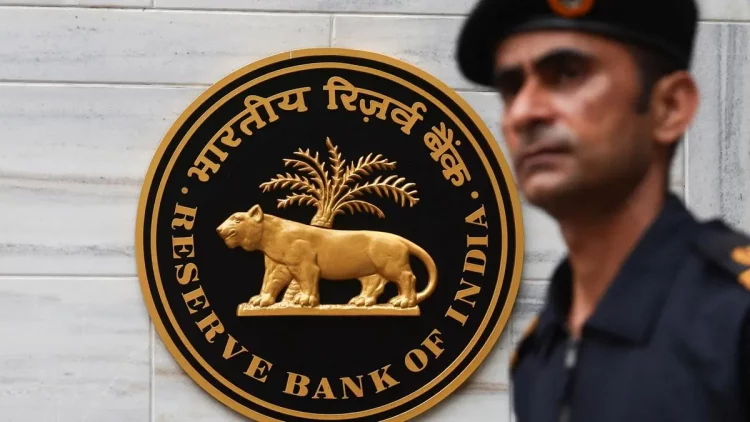Resilience in a Slowing World
As the global economy loses momentum amid sticky inflation, higher interest rates, and geopolitical fragmentation, a new cohort of emerging markets is quietly outperforming expectations. Investors are increasingly turning away from traditional global growth engines and focusing on economies that are leveraging policy reform, supply chain realignment, and demographic dividends to drive robust expansion. In a world where developed markets face stagnation and China’s rebound remains uneven, countries like India, Vietnam, and Mexico are standing out—not just for their resilience, but for their strategic positioning in the post-globalization era.
These nations are attracting record levels of foreign direct investment, benefiting from the global “China+1” manufacturing shift, and offering competitive labor costs, digital penetration, and consumer growth. For global investors, the key question is no longer whether to include emerging markets in a portfolio—but which ones, and through what instruments. Exchange-traded funds (ETFs), American Depository Receipts (ADRs), and thematic investment vehicles are increasingly being deployed to capture this dispersion. Understanding the underlying dynamics in these outperforming markets is essential for constructing smart exposure.
India’s Growth Surge and the Modi Effect
India is arguably the brightest star in the emerging market universe today. The country has not only shrugged off the post-pandemic malaise but is accelerating toward becoming the world’s third-largest economy within the decade. In FY2024, India posted GDP growth exceeding 7.5%, beating expectations despite global headwinds. This momentum is reflected in its equity markets: the Nifty 50 and broader NSE indices hit record highs, driven by robust earnings, strong retail participation, and foreign institutional inflows.
A key driver behind India’s ascent is structural reform. Under Prime Minister Narendra Modi’s leadership, the government has launched initiatives aimed at digitizing the economy, boosting infrastructure, and encouraging domestic manufacturing under the “Make in India” banner. Unified payments infrastructure like UPI has transformed fintech, while policies like PLI (Production Linked Incentives) are encouraging global firms to set up supply chains within the country.
India is also benefiting from a demographic tailwind, with over 65% of its population under the age of 35. Urbanization, a booming startup ecosystem, and a growing middle class are creating a potent mix for consumption-driven growth. Sectors like IT services, financials, pharmaceuticals, and renewable energy are attracting capital not just from local investors but also from global funds seeking high-growth alternatives to China.
For investors, the Indian market offers multiple avenues for exposure. ETFs like iShares MSCI India ETF (INDA) and WisdomTree India Earnings Fund (EPI) provide diversified access, while ADRs such as Infosys, Wipro, and ICICI Bank offer exposure to individual leaders. However, currency risk and election outcomes remain key variables to monitor in 2025 and beyond.
Vietnam: Southeast Asia’s Supply Chain Powerhouse
Vietnam has rapidly transformed from a frontier market to a strategic alternative in global manufacturing. Its GDP growth has remained robust—above 5% in 2024—despite external shocks, thanks to strong exports, rising FDI, and political stability. As companies reassess their dependence on China, Vietnam has emerged as a central beneficiary of the “China+1” strategy, especially in electronics, textiles, and semiconductors.
Major multinational corporations—including Apple, Samsung, and Intel—have ramped up investment in Vietnamese facilities. The country’s proximity to China, improving logistics infrastructure, and competitive labor market have made it a compelling choice for diversifying supply chains. Moreover, its participation in trade agreements such as the Regional Comprehensive Economic Partnership (RCEP) and the Comprehensive and Progressive Agreement for Trans-Pacific Partnership (CPTPP) provides market access advantages.
Vietnam’s stock market, though less liquid than India’s, has started to attract serious global interest. The Ho Chi Minh Stock Exchange saw record retail and foreign participation in 2024. ETF options like VanEck Vietnam ETF (VNM) provide a straightforward entry point. Sector-wise, electronics, logistics, and real estate remain focal points. However, limitations in transparency, capital controls, and regulatory delays can pose hurdles. The government has signaled a push toward emerging market classification by MSCI, which could unlock further institutional flows in the years ahead.
Mexico: North America’s Manufacturing Ally
Mexico is experiencing a renaissance driven by nearshoring. As U.S. and global firms look to build more resilient and geopolitically secure supply chains, Mexico’s manufacturing sector has surged. Its integration with the U.S. economy—via the USMCA trade agreement—makes it a natural partner for American companies seeking proximity, low transportation costs, and skilled labor.
The auto industry, in particular, has become a pillar of this resurgence. Mexico is now the fourth-largest exporter of vehicles globally and is emerging as a base for electric vehicle (EV) production. Tesla’s decision to open a new Gigafactory in Nuevo León is emblematic of the trend. Mexico’s industrial parks are booming with construction and FDI, while remittance inflows and strong services exports have helped stabilize the peso.
Politically, Mexico faces some uncertainties with the 2024 elections ushering in a new administration. However, macro fundamentals remain relatively strong, and inflation is under control compared to many LATAM peers. For investors, the iShares MSCI Mexico ETF (EWW) is the most popular vehicle, offering diversified exposure across industrials, financials, and consumer sectors. ADRs like Grupo Aeroportuario del Pacífico, América Móvil, and Cemex provide targeted plays. Risks to watch include drug-related violence, labor law disputes, and any potential strain in U.S.-Mexico trade ties under a new U.S. administration post-2024.
Comparative Advantage: Why These Markets Are Outperforming
While India, Vietnam, and Mexico each have their unique drivers, their outperformance shares common structural themes. First, all three have positioned themselves as alternatives in the evolving global supply chain architecture. Whether through nearshoring, friendshoring, or internal capacity-building, they are benefiting from multinationals’ desire to de-risk operations from geopolitical flashpoints.
Second, they all possess large, young populations that serve both as labor force contributors and consumer market drivers. This demographic advantage gives them a long growth runway, particularly in consumer goods, digital services, and housing.

Third, these countries have maintained relatively prudent macroeconomic policies. While many developing economies are struggling with debt overhangs, fiscal slippage, and inflationary spirals, India, Vietnam, and Mexico have shown commendable stability, drawing favor among sovereign bond investors and currency traders.
Lastly, strong policy coordination between governments and private sectors—be it through production incentives, trade agreements, or infrastructure investment—is helping these economies scale in ways that traditional EM leaders like Brazil, South Africa, or Turkey have struggled to replicate in recent years.
How to Invest: Vehicles and Strategies
Investing in these markets can be approached via several paths, depending on risk tolerance and desired exposure.
1. ETFs
ETFs offer the most liquid and diversified entry point. Funds like INDA (India), VNM (Vietnam), and EWW (Mexico) provide country-specific exposure, while broader EM ETFs such as iShares MSCI Emerging Markets ex-China ETF (EMXC) increasingly overweight these outperformers as China’s share shrinks. Thematic ETFs focusing on global manufacturing, digital economies, or ESG-aligned emerging markets can also provide indirect exposure.
2. ADRs and GDRs
American Depository Receipts (ADRs) for leading companies allow investors to take direct stakes in market leaders without dealing with foreign exchanges. Infosys, HDFC Bank, América Móvil, and Petroleos Mexicanos (PEMEX) are some examples. Liquidity is generally good, but investors should monitor FX risk and earnings sensitivity to local economic cycles.
3. Local Currency Bonds and Sovereign Debt
For yield-seeking investors, EM sovereign bonds from these outperformers offer relatively attractive spreads. Local currency bonds in India and Mexico have performed well in 2024 amid currency stability and falling inflation. However, Vietnam’s bond market is still developing and may be less accessible.
4. Active Funds and Quant Strategies
Actively managed EM funds have started overweighting India and Mexico, particularly as China remains volatile. Quantitative funds are also using AI models to adjust EM exposure dynamically based on policy signals, credit spreads, and FDI flows. These strategies often provide smarter beta but come with higher fees.
Risks to Consider
Despite strong fundamentals, these markets are not without risks. Political volatility—particularly in Mexico post-election and India heading into 2025—could trigger short-term market disruptions. Geopolitical alliances may shift, especially if trade tensions escalate globally. Currency depreciation, capital flow restrictions, and global recession scenarios also warrant caution.
In addition, valuation is becoming a concern. As more capital flows into these outperforming markets, equities may begin to reflect overly optimistic growth assumptions. Investors should balance excitement with discipline, using periodic rebalancing and volatility-based risk management.
The New EM Playbook
Emerging markets are no longer a monolithic asset class driven by commodity cycles or China’s industrial output. In today’s fragmented, multipolar world, performance dispersion is widening—and savvy investors are treating EMs as a series of unique, policy-driven growth stories. India, Vietnam, and Mexico are showing that with the right reforms, infrastructure, and alignment with global shifts, sustained growth is possible even in a turbulent global macro environment.
For global investors, these markets offer both near-term opportunity and long-term structural upside. But they require new frameworks—blending top-down macro analysis, bottom-up corporate insight, and careful attention to political and FX risk. With the right tools and expectations, these emerging economies may become the new anchors of portfolio growth in the 2025–2030 cycle.













































